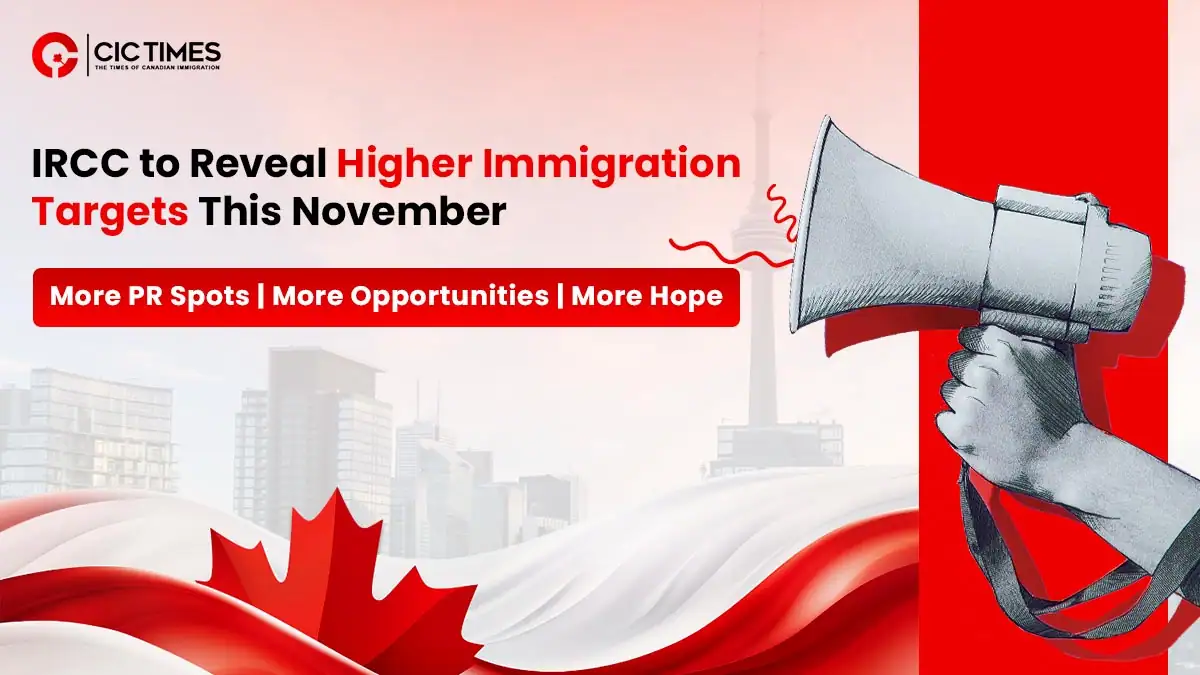What to Expect from Canada Immigration Levels Plan 2026–2028

Canada Immigration Levels Plan is one of the most anticipated announcements every year between October to November. This plan helps to shape the future of the country’s population growth, labour market needs and the demographic balance.
However, this immigration plan primarily focused on the annual number of permanent residents who can apply or be admitted to Canada. It also set the targets for all types of immigration categories. In the previous year, IRCC expanded its scope by adding targets specifically for temporary residents, including students and workers.
Moreover, everyone is waiting for the Canada immigration levels plan, not only for the raw numbers, but also to understand how IRCC balances permanent and temporary visa arrivals.
IRCC Prepares Canada Immigration Levels Plan 2026–2028
Following last year’s renewed approach, this year’s direction is shaped by the Government of Canada’s commitments to:
- By the end of 2027, Canada’s government will reduce the country’s population by 5% for non-permanent residents.
- Maintain permanent resident admissions at under 1% of Canada’s population each year after 2027.
- By 2029, the immigration plan will target 12% of Francophone communities outside Quebec.
Canada is preparing the 2026–2028 Immigration Levels Plan under a unified, society-wide approach to immigration, set for release in fall 2025.

IRPA: The Law Behind Canada’s Immigration Targets
Under the Immigration and Refugee Protection Act (IRPA), the Minister of Immigration, Refugees and Citizenship must represent the annual projection of permanent resident admissions. This is known as the Immigration Levels Plan.
For the first time, the 2025-2027 plan included targets for temporary residents. It helps to make a more comprehensive approach to managed migration.
The multi-year plan outlines the number of immigrants Canada will admit as:
- Permanent residents under the economic, family, refugee or humanitarian programs, and
- Temporary residents through the international student and temporary foreign worker programs.
It renews annually on a rolling three-year basis, establishing firm targets and ranges for the first year, and notional targets and ranges for the second and third years, allowing for flexibility to adjust to any real-world developments or changes.
However, the 2025–2027 Immigration Levels Plan reduced permanent resident targets beginning in 2025. It set lower notional targets for the following two years to ensure well-managed, sustainable growth and long-term economic prosperity.
The plan outlined targets of
- 395,000 in 2025
- 380,000 in 2026
- 365,000 in 2027
Supporting Canada’s economy remained a key priority, with economic class admissions accounting for the largest share, which is projected to reach 62% by 2027. A greater portion of these admissions was allocated to federal economic programs, designed to attract skilled workers in essential sectors such as health care and the trades, while also facilitating pathways to permanent residence for individuals already in Canada.
The family class programs continued to promote family reunification, maintaining 22% of overall permanent resident admissions. Canada also upheld its strong humanitarian tradition by sustaining targets for Government-Assisted Refugees, contributing to approximately 15% of total admissions for resettled refugees and protected persons.
How to Immigrate to Canada in 2025
There are two primary methods for individuals to enter Canada. They can come as either:
- Temporary Resident: In this way, Canada invites only visitors, students or workers who want to work in the country for a limited time period.
- Permanent Resident: Only those candidates who wish to become citizens of Canada are eligible.
Overall, the Immigration Levels Plan aims to build a sustainable, inclusive Canada immigration system that strengthens diversity, supports vibrant communities, promotes economic prosperity, and ensures the safety and security of Canadians.
As the Canadian assesses both temporary resident arrivals and permanent resident admissions, they invite input to help shape the upcoming 2026–2028 Immigration Levels Plan.
Subscribe for FREE and stay updated
With the latest Canada Immigration News!
Source: canada.ca
Related Posts

Canada Extends Open Work Permits for TR to PR Pathway Applicants
By
Eva Olsen
[Published
21 Dec, 2024 | 03:49 PM]
82963

IRCC to accept PTE for Canada Visa applications in 2023!
By
Eva Olsen
[Published
04 Feb, 2023 | 07:57 AM]
59946

New measures will clear Canada Visitor Visa backlog by Feb
By
Eva Olsen
[Published
20 Jan, 2023 | 06:48 AM]
45196

What is the Canada PR process for Indian Lawyers in 2023?
By
Eva Olsen
[Published
13 Apr, 2022 | 03:34 PM]
37964
.jpg)
Canada immigration: Significant changes to NOC 2022
By
Scarlett Wilson
[Published
01 Nov, 2021 | 04:41 AM]
29983
Stay up to date with the latest news










Comments
We welcome your feedback
Your email address will not be published. Required fields are marked *